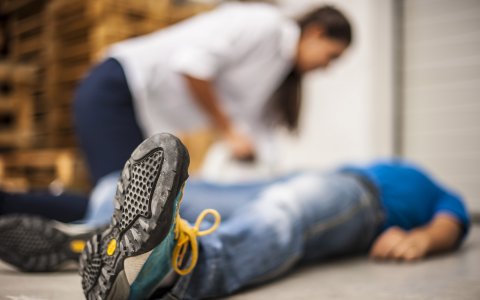Implementation and evaluation of take-home naloxone for opioid overdose prevention in drug and alcohol treatment and needle syringe programs attendees
NDRI:
Professor Simon Lenton
NDARC:
Dr Suzanne Nielsen
Dr Marian Shanahan
Professor Nicholas Lintzeris, South Eastern Sydney Local Health District (LHD) (lead investigator)
Associate Professor Adrian Dunlop, Hunter New England LHD
Professor Paul Haber, Sydney LHD
Associate Professor Nadine Ezard, St Vincent’s LHN
Dr Phillip Read, Kirketon Road Centre, South Eastern Sydney LHD
Mary Harrod, NSW Users and AIDS Association (NUAA)
Professor Paul Dietze, Burnet Institute
Dr Lauren Monds, Sydney University/ South Eastern Sydney LHD
Naloxone is an opioid antagonist used to reverse opioid overdose. International and Australian research demonstrates the effectiveness of take-home naloxone (THN) for preventing overdose deaths in opioid users; WHO recommends the expansion of such programs. However, there has been limited uptake of THN in Australia outside of research projects. A pilot study (n=89) of THN in South Eastern Sydney Local Health District (SESLHD) documented 18 overdose reversals using THN and identified barriers to THN uptake. SESLHD subsequently developed a 10-15 minute brief intervention (THN-BI) that incorporates client education and the supply of ‘overdose kits’ with naloxone. However, the effectiveness of the new THN-BI remains untested, and there continues to be limited uptake of THN outside of SESLHD.
This project will:
- Establish the capacity to deliver THN-BI to opioid users attending drug and alcohol (D&A) treatment, needle and syringe programs (NSPs) and peer-led outreach programs in six local health districts (LHD)/networks (South Eastern Sydney Local Health District, Sydney Local Health District, St Vincent’s Health Network, Hunter New England Local Health District, Murrumbidgee Local Health District, Western Sydney Local Health District), including the adaptation of THN-BI to local service settings, and implementation and evaluation of training programs for workers delivering THN-BI.
- Deliver ~500 THN-BI, with each LHD catchment area providing THN-BI to ~100 clients (50 attending D&A, 50 at NSPs/outreach). The project will evaluate the:
a) effectiveness of THN-BI in enhancing knowledge and skills of participants in preventing and responding to overdose; and
b) use of naloxone to reverse overdoses in the 3 months following the THN-BI in a subsample of 150 participants. - Examine the feasibility, sustainability and scalability of the intervention across NSW Health, by:
a) examining barriers and facilitators to THN through staff and consumer feedback;
b) an economic analysis of the costs and potential savings to the health system arising from the THN-BI; and
c) refinement of THN policies and procedures, and training programs informing future rollout of THN-BI across NSW.











